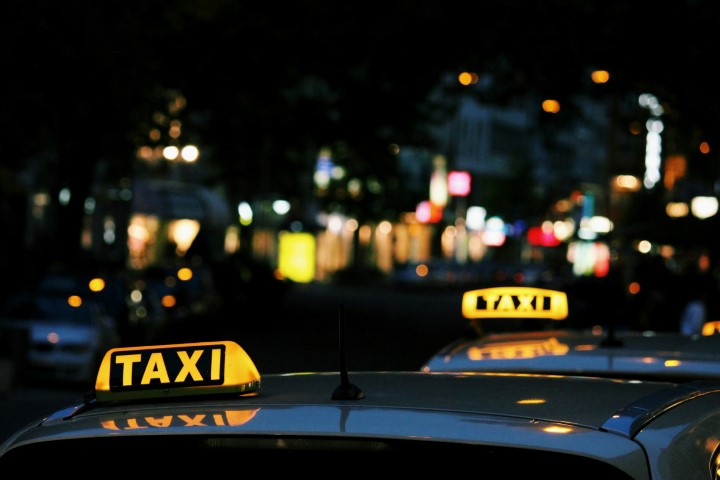 In an unusual turn of events last month, Arizona police experienced a surprise when they attempted to pull over a car driving the wrong way, only to discover it was a self-driving Waymo taxi with no driver behind the wheel.
In an unusual turn of events last month, Arizona police experienced a surprise when they attempted to pull over a car driving the wrong way, only to discover it was a self-driving Waymo taxi with no driver behind the wheel.
The incident occurred on June 19, when a Waymo electric Jaguar was spotted driving erratically, swerving, and moving against traffic. Officers quickly moved to stop the vehicle to address the issue. However, upon catching up to the car, they found it was an autonomous vehicle, according to a report by Fox 10 News in Phoenix.
Witnesses were intrigued by the sight. “I couldn’t help but come over here just out of morbid curiosity. I thought maybe there was a passenger,” a passerby commented to the officer at the scene. The officer explained the situation, saying, “You know the construction here? It was going eastbound in the westbound lanes, which is real bad. So I light it up and it takes off in the intersection.”
Waymo responded to the incident in a statement, attributing the erratic behavior of the robotaxi to “inconsistent construction signage” in the area. According to Waymo, the driverless car was blocked from returning to the correct lane for about 30 seconds. To clear the intersection, the vehicle moved forward slightly and pulled into the nearest parking lot. Waymo described the incident as lasting around one minute.
The statement, however, did not address the fact that a human driver would likely have avoided driving into oncoming traffic, despite the confusing signage.
Despite the unusual nature of the incident, the police allowed the Waymo vehicle to continue without issuing a ticket. While ticketing robotaxis is permissible in Arizona, it is not a common practice. Unlike in California, where self-driving cars are currently exempt from traffic tickets, law enforcement in Arizona and Texas can impose significant penalties on the owners of autonomous vehicles. Nevertheless, Phoenix police noted that self-driving taxis are seldom ticketed, even with reports of the cars stalling in traffic and driving unpredictably.
This incident is not the first clash between Waymo and other self-driving car companies with law enforcement and first responders. There have been previous instances, such as in San Francisco, where police attempted to pull over a Cruise car, and cases where autonomous vehicles obstructed ambulances and fire trucks.
As autonomous vehicles become more prevalent, these encounters highlight the challenges and unpredictability of integrating self-driving technology into existing traffic systems and the importance of clear communication and responsive measures between tech companies and law enforcement.
Recent Developments in Autonomous Vehicles
The field of autonomous vehicles is rapidly evolving, with companies like Waymo, Cruise, and Tesla pushing the boundaries of self-driving technology. Waymo, a subsidiary of Alphabet Inc., has been at the forefront, testing its self-driving taxi in multiple cities across the United States. Recently, Waymo expanded its autonomous ride-hailing service in San Francisco and Phoenix, offering fully driverless rides to the public.
In addition to expanding its service area, Waymo has been working on improving its technology to handle complex urban environments better. The company has been focusing on enhancing its artificial intelligence (AI) systems to make more accurate and safer driving decisions. These improvements include better handling of unpredicted road conditions, construction zones, and emergency vehicle interactions.
Accident Liability with Autonomous Vehicles
One of the critical issues surrounding autonomous vehicles is the question of liability in the event of an accident. Traditional car accidents typically involve the drivers of the vehicles, but with autonomous cars, determining fault can be more complex, according to a Phoenix car accident lawyer. Liability may fall on the vehicle manufacturer, the software developer, or even the entity that owns and operates the autonomous vehicle.
In some states, laws are being updated to address these new challenges. For instance, California has established regulations requiring autonomous vehicle companies to carry specific insurance coverage and to report any incidents involving their vehicles. However, the legal landscape is still evolving, and many questions remain unanswered about how liability will be handled as autonomous technology becomes more widespread.
The incident in Arizona with the Waymo self-driving taxi underscores the growing pains associated with integrating autonomous vehicles into our transportation systems. As these technologies continue to develop and expand, it will be crucial for companies, lawmakers, and law enforcement to work together to address the challenges and ensure the safety and reliability of autonomous vehicles. With ongoing advancements and regulatory developments, the future of self-driving cars promises to be both exciting and complex.










